
Review on 💻 Enhanced Belkin 2-Port KVM Switch with Pre-Attached Cables (F1DJ102P-B) by Jeff Clites

Please note that issues reported by others may not be reproducible in other environments.
I have noticed that the problem notes in the reviews below may not match your experience. Even non-professional writers may not try all available options for their solution and expect that in case of a Linux to Windows switch everything should work automatically. This cannot be the case and not at the switch (or not just at the KVM switch). One of the attractions of this model is that (considering the price) you can replace the cables with better ones. For example, use high-quality video cables. As far as video cables go, however, Belkin cables have different connectors on different ends, so this isn't an option unless you have access to non-standard cables. In the latter case, it may make sense to use a separate video cable, as the video cable that comes with it looks too flimsy and may have insufficient shielding and higher resistance. Mouse problems on Unix (and your second machine is FreeBSD, Solaris, or Linux). They don't have a wheel, but all three buttons work. In fact, expect problems if the second computer is Unix. Looking at Slashdot's discussion of how mouse wheels work with KVM? for ideas. Some possible good Windows Unix setup tips: - Use a Microsoft mouse instead of a Logitech - Buy a professional KVM or other KVM (Connectpro Master IT?) - Roll back the X mouse driver with a script or program , which emits the corresponding reset code for the mouse device. Or reload the X mouse driver by switching to a virtual console and use the "PS/2 serial cable" for the mouse again. Of course, in the professional environment you will use something like Avocent, but at home you will also find an acceptable solution with Belkin. if your second computer is Unix. Just don't expect it to work automatically in a heterogeneous environment and do your homework. NOTE: IMHO you have to be careful not to disconnect and reconnect any cables while the computer is on. Also, all mice and keyboards need to be a tight fit, and unless the device is mounted on a wall or table, they can accidentally detach or even become detached. This is a design flaw, but it's made up for by the ability to use your own cables. Observations: 1. Unlike previous reviewers, it works well with the Dell Dock and c610.2 laptop. Unlike previous reviewers, it works with Microsoft Intellimouse. Both the wheel and the extra buttons (back and forth in IE) work well.3. Contrary to what previous reviewers have said, it works with a USB mouse via a PS/2.4 converter. I can echo previous reviewers that sometimes the screen resolution changes when switching from one computer to another. Using the same permissions on both machines might help fix the problem (it didn't in my case). I still don't understand why this happens, but it happened to me once. Using an external power supply may prevent this effect. I just don't know.5. The unit can be easily and conveniently wall mounted (behind or next to a desk) using a small bracket or cable looped over the main video jack. This is where T-connectors really help.
- I look forward to
- . The list will be long.
New products
Comments (0)
Top products in 🔀 KVM Switches
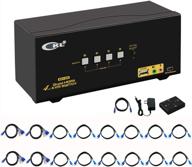
CKL Quad Monitor HDMI KVM Switch 4 Port 4K@30Hz with Cables - Extended and Mirrored Display Support for Windows, Linux, and Mac

11 Review
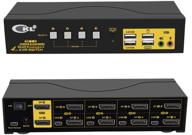
CKL 4 Port KVM Switch Dual Monitor DisplayPort 4K 60Hz: Unprecedented Multi-Computer Control with Audio, USB 2.0 HUBS, and DP 1.2

11 Review
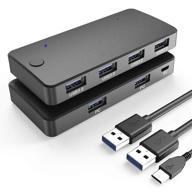
4 Port USB 3.0 Switch Selector - Pubioh KVM Switch for Mouse, Keyboard, Printer, Scanner - 2 in 4 Out Sharing Box with Switch Button and 2 USB 3.0 A to A Cables

11 Review
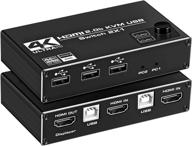
NEWCARE HDMI KVM Switch: 4K@60Hz, 2x1 HDMI2.0 Ports + 3X USB KVM Ports - Share 2 Computers on UHD Monitor, with Wireless Keyboard and Mouse Support - USB Disk, Printer, USB Camera Compatible

10 Review
Another interesting products
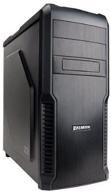
Zalman Z3 M ATX 💻 Tower Computer: A Compact and Powerful Machine

77 Review
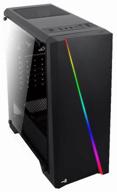
Computer case AeroCool Cylon black

39 Review

Computer case be quiet! Pure Base 500 black

32 Review
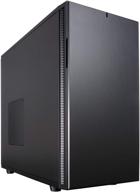
Fractal Design Define R5 - ATX Mid Tower Computer Case - High Airflow and Silent Optimized - Includes 2x Dynamix GP-14 140mm Silent Fans - Water-Cooling Ready - Black

43 Review

